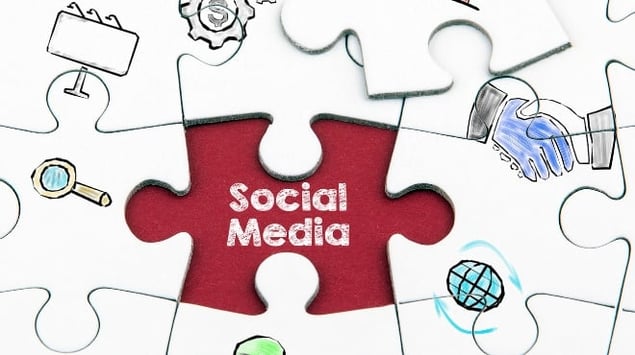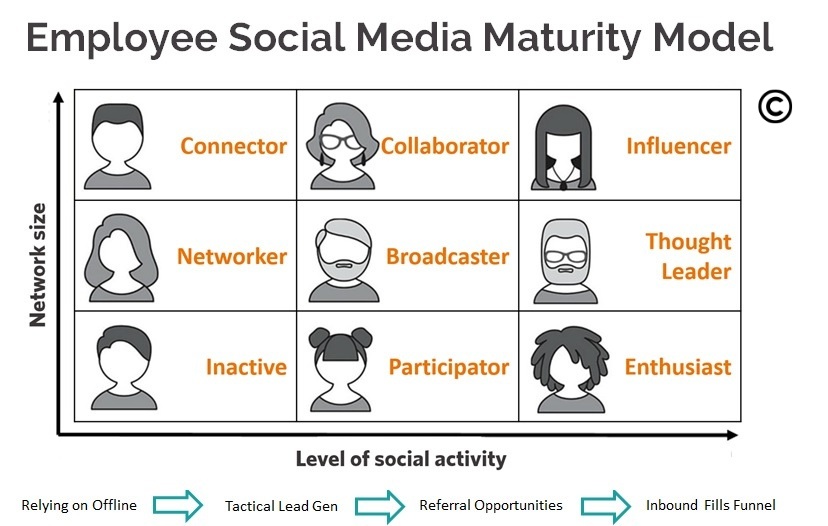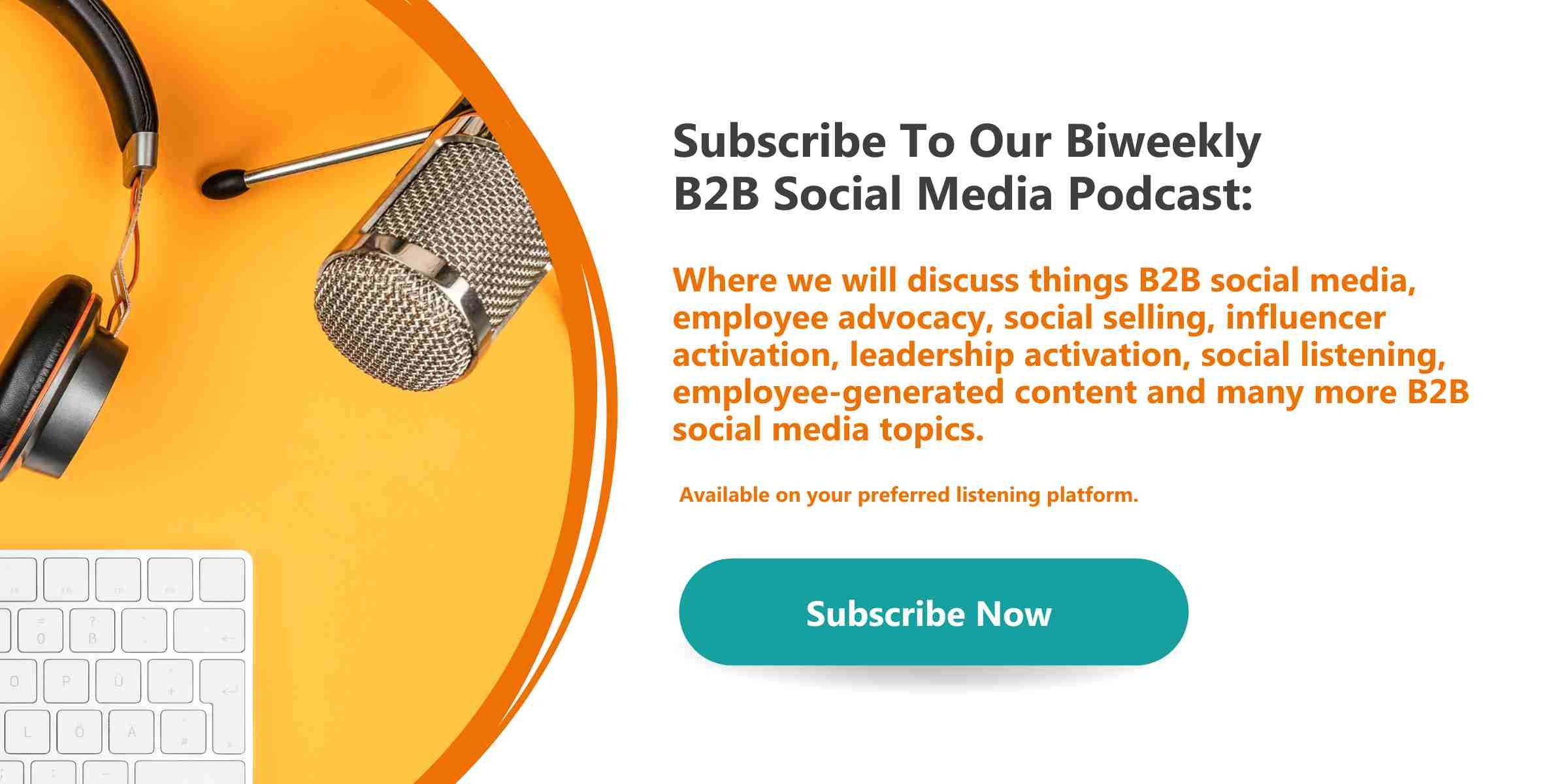
Getting C-Suite’s buy-in to implement a social media and employee advocacy strategy is important, but it isn’t always easy.
C-Suite can often assume social media is all about promoting the brand, not see the point in it, or not be users of it themselves. Which means they’re less aware of the results that social media could achieve for the business.
In this post, we’re going to look at how you can get buy-in from your C-Suite for a B2B social media and employee advocacy strategy.
Go Back To Basics
Many businesses create branded social media pages or accounts and leave their strategy at that. This leaves big gaps in their knowledge, their ability to connect with their audience and employees, and can mean they’ll get left behind by their competitors.
Consistency in content style is important, but that can mean that some content or services just aren’t a good fit for what’s shared on a branded social media account. Which means those things get forgotten or don’t get the attention they deserve. They can still make a big difference to a business’s bottom line if they reach the right people, though.
Getting followers on any account is another struggle which has become even harder for business accounts that only talk about themselves. Businesses that don’t provide value have less reach because social media algorithms punish this type of content with less reach (because they want businesses to pay to promote themselves), and audiences engage with it less.
Partner With HR
HR departments can sometimes have a bigger budget than marketing or communications. That means they have more to spend on an advocacy strategy. And social media can provide a lot of benefits to their hiring processes.
Contrary to popular belief, social media isn’t just about marketing and selling.
Employee-generated content attracts better talent because prospects get to see what life could be like if they worked for the company. Attracting better talent reduces the time and cost to hire, something no HR team would ever turn down.
Find Benefits For Other Areas
HR isn’t the only team who can benefit from a social media strategy. Look at the buying cycle and focus on how social media can help with each person’s goals.
According to Social Media Today, content shared by employees receives EIGHT TIMES more engagement than content shared by brand channels. That’s a lot more potential buyers for sales teams to reach. Especially when you consider that brand messages go 561% further when the same content is shared by an employee instead of a business (MSL Group).
Other areas which could benefit from social media include analysts, who could use it for social listening, or media relations who could connect with more journalists. All things which help them perform their jobs better.
It’s helpful to get the finance department on board, too. How can they help you prove the business case? Is it more of a savings case or an investment case? Ask them what can you look out for if it’s an investment case?
Remember that the CFO won’t know all about social media, and you don’t know all about finance, so ask what they want and need to get started. The more information you can provide, the more they’ll be able to help.
The more employees within the organisation you can get to see the benefits, the stronger the case you’ll have when it comes to selling it to the higher-ups.
Find Out Employees’ Social Maturity Levels
Someone’s social media maturity level can help you work out if they’re a good fit for the pilot programme. How much of an understanding of social media do they have? How willing are they to take part?
Their maturity level will change over time, so you want to keep monitoring them and see if anyone has progressed to a new phase, and how you could utilise that.
It can help to show people what their social media footprint is before they start, too. This can be a way to encourage them to get involved, or to see the impact social media can have.
To do this, search for their name on a search engine, then show them the results.
Is this how they want to come across on social media? This is a great way for them to check that the content they want is visible, and their private posts are kept private.
It can also show them just how much of what they post online is visible, and why being more mindful of what they share can help their personal brand.
Everyone is motivated by different things, so if you can tap into what motivates each person, and make it clear how social media can benefit their goals, you’re one step closer to getting them to join an advocacy programme.
Run A pilot
The smaller the steps you take, the more likely you are to be successful. This is where running a pilot programme comes in.
Six months is a good time frame because it’s long enough for employees to understand social media and how it works, and for the programme to start generating results.
During the pilot, you need to onboard those who are interested in taking part. It’s better to focus on employees who are interested in trying it, rather than trying to encourage employees who aren’t regular social media users, or aren’t interested in advocacy. It’ll save you time, and they can prove the results to the rest of the business.
Those first few months should be spent on education. Teach employees how to use social media for business in the right way. Make sure they understand your social media policy (and if you don’t have one, now is the time to create one, here’s a template to get you started).
Our recent study found that over 80% of employees are on social media every day, meaning the business case for social media has never been stronger.
But 43% of those aged 18-24, 42% of 25-34-year-olds, and 48% of employees 55+ have read and not understood, never read, or aren’t aware of, their company’s social media policy.
Which shows there’s a disconnect between the social media education businesses think they’re giving employees, and what employees’ understandings of it are.
Without education, employees may think all they need to do to become a successful advocate is to share some content on Twitter, then disappear again, or send out cold InMails on LinkedIn. In reality, it’s so much more in-depth – and more fun! – than that.
Even if they’re regular social media users, that doesn’t mean they know how to use it from a business perspective. Picking up bad habits is easy to do but hard to fix.
If you make the rules clear from the start, it’s easier for everyone as the programme grows. Seasoned advocates can set an example, while employees who are new to the programme know what’s expected of them.
It's really important that no matter how many people are involved with the pilot, it doesn’t interfere with their roles. It should be done on top of their regular job. The pilot interfering with anyone’s regular job is definitely not going to help get C-Suite on your side.
Track Its Success
Look at how the programme is benefitting the pipeline. Are steps getting faster? Are you getting fewer customer enquiries before purchases?
Also consider how share of voice is growing around certain topics, you can use tools like Onalytica to figure this out. You can even take it a step further and correlate employees’ SSI scores and the company’s sales metrics. For example, you may find that those with a higher SSI score have closed higher value deals than those with lower scores, or you can see how sales cycles have decreased from those with high SSI scores.
The metrics which matter will be different for every employee in the different business units (HR, Marketing, Sales, Finance, etc) which is why it’s important you understand the benefits of social media for each business unit.
We can’t highlight this enough, but it’s important very important for to get qualitative stories for everyone to see the benefits and become a part of the programme. Qualitative stories are those that happen that you can’t track, it’s a phenomenon called Dark Social. For example, you may be posting on LinkedIn about a certain topic and your target account isn’t engaging with your post, but when they book a sales meeting, they reference the posts you’ve been publishing on LinkedIn. It’s like word of mouth, it’s impossible to track how often your company is mentioned in business meetings but it’s so impacting.
Speak Their Language
Getting C-Suite buy-in requires much more than having a great idea. You need to share the benefits with them in a way that will appeal to them.
How does it benefit the business? Who needs to get involved? What would the programme need in three months, six months, a year?
The more details you can give them, the stronger your case will be when you present it to C-Suite.
Especially if you’ve already got facts, figures, and anecdotes from other areas of the business – and maybe even other businesses – on how impactful a social media and employee advocacy programme can be.
Sometimes you may have to say something multiple times for people to listen and understand, but taking that time is an important step in introducing something new.
Conclusion
Implementing a social media and employee advocacy programme is, ultimately, a change management programme. You’re permanently changing how everyone within the business sees and uses social media. That means it takes time, which can be frustrating.
But that time is important. You need it to get proven results which will show how social media and employee advocacy can help all areas of the business. The more of these stories you have, the more powerful they’ll be when you present the case to C-Suite.



